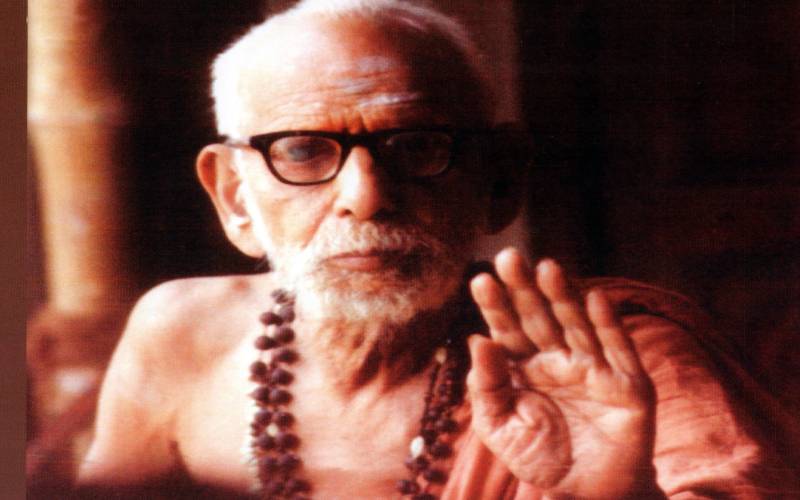
Jagat Guru Sri Chandrashekarendra Mahaswamigal (1894 – 1994) was the sixty-eighth Shankaracharya of the Kaanchi Kaamakoti Peetam. He was born as Swaminathan Sharma, and he belonged to a Kannada-speaking Smartha Brahmin family. His parents were Subramania Sastry and Mahalakshmi. The mother hailed from Eachaangudi village near Thiruvaiaaru. The saint happened to be the second child of his parents and his upanayanam was performed at Thindivanam during the year 1905. He was a precautious child and became well-versed in the scriptures even during his earlier days.
History tells us that the sixty-sixth aachaarya of Kanchi Chandrasekarendra Saraswati VI was camping in Perummukkal near Thindivanam and he attained siddhi at Kalavai. Swaminatha Sharma’s maternal cousin was installed as the aachaarya (Mahadevendra Saraswati V). He had a fever which was followed by a turn of unexpected events. Ultimately, Swaminatha Sharma was installed as the sixty-eighth pontiff in the year 1907. He was given the name Chandrasekarendra Saraswati.

The aachaarya was given inputs by numerous scholars and he spent two years with the pundits of the mutt at Kumbakonam. Mahendra Mangalam, on the northern bank of Akanda Kaveri, was his vaasasthalam between 1911 and 1914. He had great interest in photography, mathematics, and astronomy. I learnt that the mutt was managed by a court of wards until the aachaarya turned twenty-one.
Mahaperiyava had a bath in the Kumara Koshta Theertha before getting into a cart that would take him to Kalavai. The twelve-year-old boy was told that he would ascend the pontificate while moving on the cart. On learning about the same, he started uttering the word, Rama, repeatedly and the rest is history.
Anusham born Mahaperiyava had ascended the pontificate on Moolam. Mahaperiyava had practiced the advaita philosophy as espoused by the Vishwa Guru, Adi Shankara Bhagavadpaadha. The sage of Kaanchi had renovated numerous temples and had also increased the recital of various texts like ‘Vishnu Sahasranaamam.’ He helped Vedic priests with regard to pronunciation. Mahaperiyava implemented rigorous aagamic teachings describing cosmology, epistemology, philosophical doctrines, precepts on meditation and other topics.
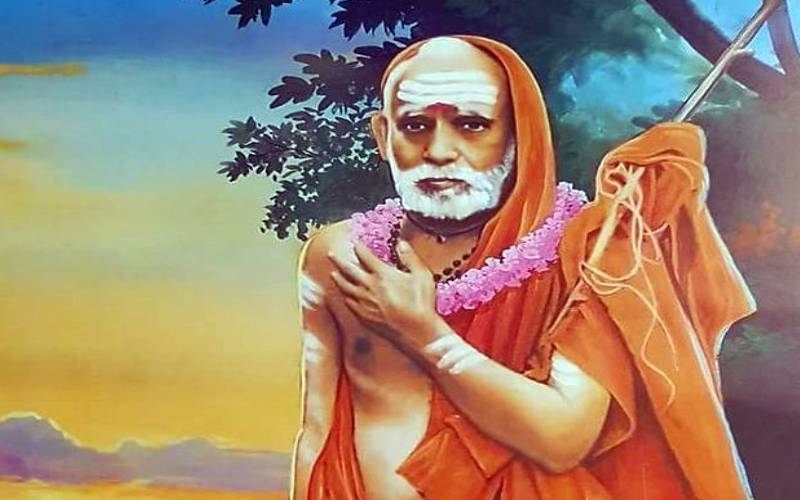
The sage of Kaanchi began to allow devotees into the temples. The true nationalist gave a speech on the significance of the flag and the dharmachakra found on it. He travelled all over India and gave discourses. The great sage spoke about dharma, ancient culture, and a variety of subjects. The common man was the main recipient of this largess.
His discourses were delivered on riverbeds, small halls, and simple verandahs and his approach was simple. All his discourses were compiled by his disciple, R. Ganapathy under the title, ‘Deivathin Kural’ (The Voice of God). This was published in English, Tamil, and in numerous languages. Mahaperiyava revived Sanatana dharma by travelling throughout the country and also offering guidance to the beleaguered Indians.
Several schools, and institutions were founded by him, and he reconverted Indian National Congress Leader, F. G. Natesa Iyer (Mayor of Thiruchirapalli), from Christianity to Hinduism. This gentleman gave a grand reception to the sage of Kaanchi at Trichy. Numerous dignitaries had met Mahaperiyava and they include, Dalai Lama, Sathya Sai Baba, Gandhi, Rajaji, Kannadasan, the Raaja and the Raani of Nepal, the Queen-mother of Greece, R. Venkataraman, Shankar Dayal Sharma, Kalki Krishnamoorthy, Indira Gandhi, Attal Bihari Vajpayee, M. G. Ramachandran, M. S. Subbulakshmi, Sivaji Ganesan, Ilayaraja, G. D. Birla, and J. R. D. Tata.
His younger brother, Sadasiva Sastry, popularly known as Sivan SAR, was a nyaani and his book, ‘Yeni Padigalil Maandhargal,’ (650 pages) is very popular. This would need a separate chapter to talk about. Mahaperiyava inscribed the name, Raama, on the bricks that were to be taken to Ayodhya. These bricks were meant to be used for the construction of the Raama Temple of Ayodhya. He induced the Raama bhakta, Ekambaram maama, to begin the Raama Naama Bank. It is due to this inducement that more than 8 thousand crores of Raama Naama have been written thus far.
Banker, M. N. Ramaswamy Iyer and his son, M. R. Narasimhan, were deeply attached to Mahaperiyava. Several musicians like Vikku Vinayakram continue to swear by him. Bharat Ratna Awardee, M. S. Subbulakshmi, rendered his composition, ‘Mythreem Bhajathe,’ at the United Nations. Coimbatore-based Advocate, T. S. Raghvendran (Dvaita Scholar) remembers meeting the aachaarya at the Kaanchi Mutt along with an advaiti and a vishishtaadvaiti. He had proclaimed that all the three, dvaita, vishishtaadvaita, and advaita, were converging.
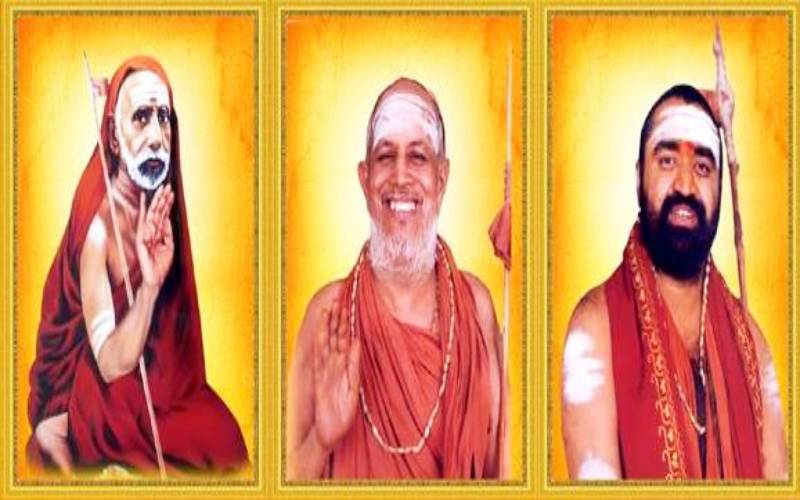
An eminent scholar, Sujatha Vijayaraghavan, has done a lot of literary works connected to Mahaperiyava. Businessman, Dharnendra Mommaiyya, is deeply connected to several followers, particularly musician followers, of Mahaperiyava. He would often visit Eachaangudi, the birthplace of Periyava.
I have learnt that several temples have been built for Mahaperiyava. The temple at Perur near Coimbatore is one amongst them. My introduction to Mahaperiyava began during my childhood days. I remember people talking about him. The ‘Kalki’ magazine always carries out a message from him. The Diwali edition of ‘Kalki’ would be special, and it would contain a nice picture of Mahaperiyava. Stories connected with him would be constant in all the publications.
The long tenure of Mahaperiyava ensured that his chaaturmaasyam took place in several sacred places. I remember the devout telling me about his chaaturmaasyam at Thiruvelliyaangudi. The talented artist, Gangadharan, told me that he had been to Orirukkai and then went on to seek the blessings of Mahaperiyava to make a portrait of him.
Mahaperiyava was sitting in one place and was maintaining silence. Gangadharan sat down in front of him and began doing the portrait. Periyava would once in a way change his posture and this was actually the requirement for Gangadharan. This was his first work as a commercial artist, and he went on to do marvellous pieces. Gangadharan told me this story while creating a super large portrait of Mahaperiyava for R. V. S. Mani Naidu (V. Radhakrishnan). This industrialist had once requested me to get Gangadharan to do a large six-by-four portrait of Mahaperiyava. A nice book containing a collection of Mahaperiyava’s photos was acquired and this was given to Gangadharan. The outcome was fabulous.
Mettur Swami was close to Mahaperiyava and he collected one hundred and eight brass containers of water from Siddha Ganga through a number of devotees. He had wanted to do an abhishekam to Mahaperiyava with the same. However, the saint decreed that the Brihadeeshwarar installed during the reign of Rajendra Chola (1040 – 1044) at Gangaikonda Cholapuram was to be anointed with these waters. Mahaperiyava stated that the great Rajendra Chola deserved it all the more, for he had sent his army up to the river Ganga. Therefore, an abhishekam was performed and this was followed by an annaabhishekam. The rice required for the annaabhishekam was collected from the individual households. Mahaperiyava was happy to accept the Ganga Theertham after the abhishekam was done to Lord Brihadeshwara at Gangaikonda Cholapuram. The annaabhishekam continues in the ancient temple even today.
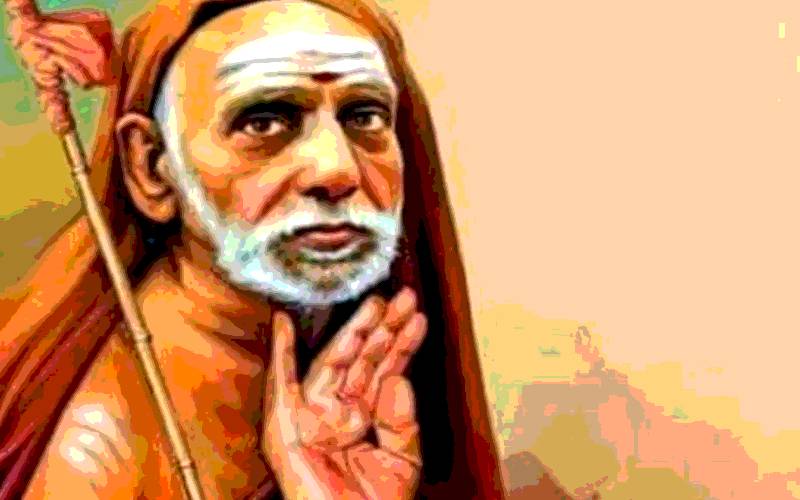
Several devotees from Andhra Pradesh had presented a gold crown on the 75th year of his ascension (While he was camping at Satara). Mahaperiyava refused to accept it, but he suggested that the same may be used as a crown for the mighty chola emperor, Raja Raja Chola (985 – 1014 AD). He had opined that it was the great chola emperor who brought out the thirummurai-s and hence was known as Thirummurai Thandha Devan. The gold crown was presented to the authorities, and it was used for coronating the icon of Raja Raja Chola, year after year on his birthday, Aippasi Sadhayam.
On another occasion, a few Russian visitors had the good fortune of meeting Mahaperiyava and to their surprise he gave out a few names which were used by Russians in the locality from where the visitors belonged to. There was a small boy with skin afflictions and on knowing about the same, Mahaperiyava advised his father to leave the child in the mutt. The child followed a particular routine which the Mahaperiyava had also followed, and he became alright.
There was a poor pravachana karta who was in need of money for his daughter’s marriage, and he went to seek the blessings of Mahaperiyava. He advised him to go to a not so well-known Perumal temple in the southern districts and read out a sacred text for about ten days. The scholar took it upon himself and followed the instructions. He returned home after the ten-day ritual and was surprised to learn that a set of clothes required for a bride and groom, along with some cash and gold had been sent from the Kaanchi Mutt to his house during his absence. In fact, the poor scholar had not even made a request to the sage of Kaanchi.
There are numerous instances wherein the grace of Mahaperiyava has made life better for people. All of this was done while also upholding Vedanta as espoused by Adi Shankara. Mahaperiyava had in short ensured that purusharthaa-s, namely the goals of life, were addressed by the people belonging to various aashrama-s, brahmacharya, grhastha, vanaprastha, and sanyaasa. Thousands of stories connected with Mahaperiyava had been recorded but I must say that millions have to be recorded.
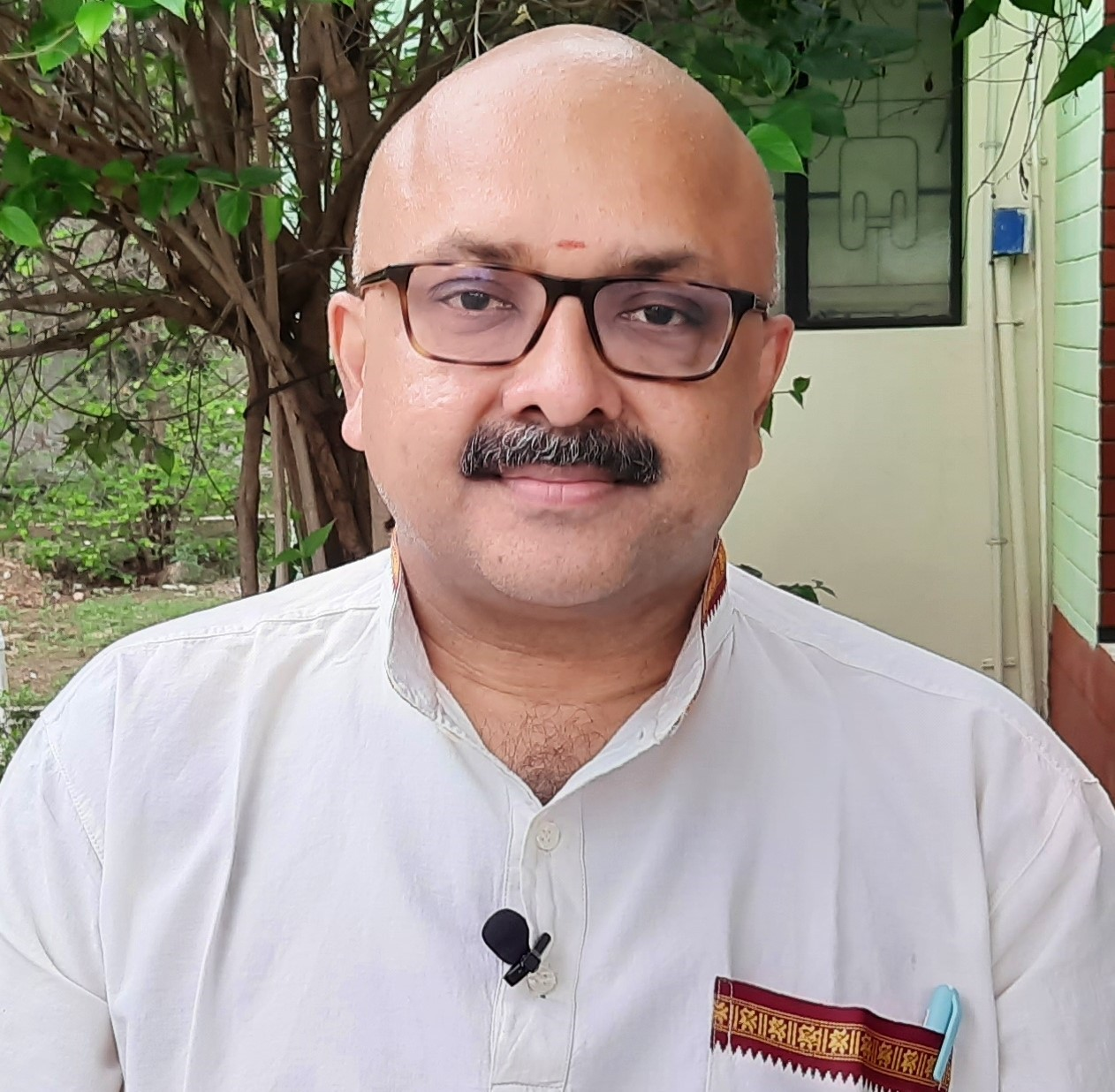
Mr. Rajesh Govindarajulu is one of the founding members of the Verandah Club Pvt. Ltd. He is a leading columnist, historian, jeweler, entrepreneur, and a heritage enthusiast who is earnestly working to revive the past in the light of the present. Experiential learning about the history of Coimbatore is his main course of interest and he is also a panel member of many colleges in the city.
NEXT ARTICLE
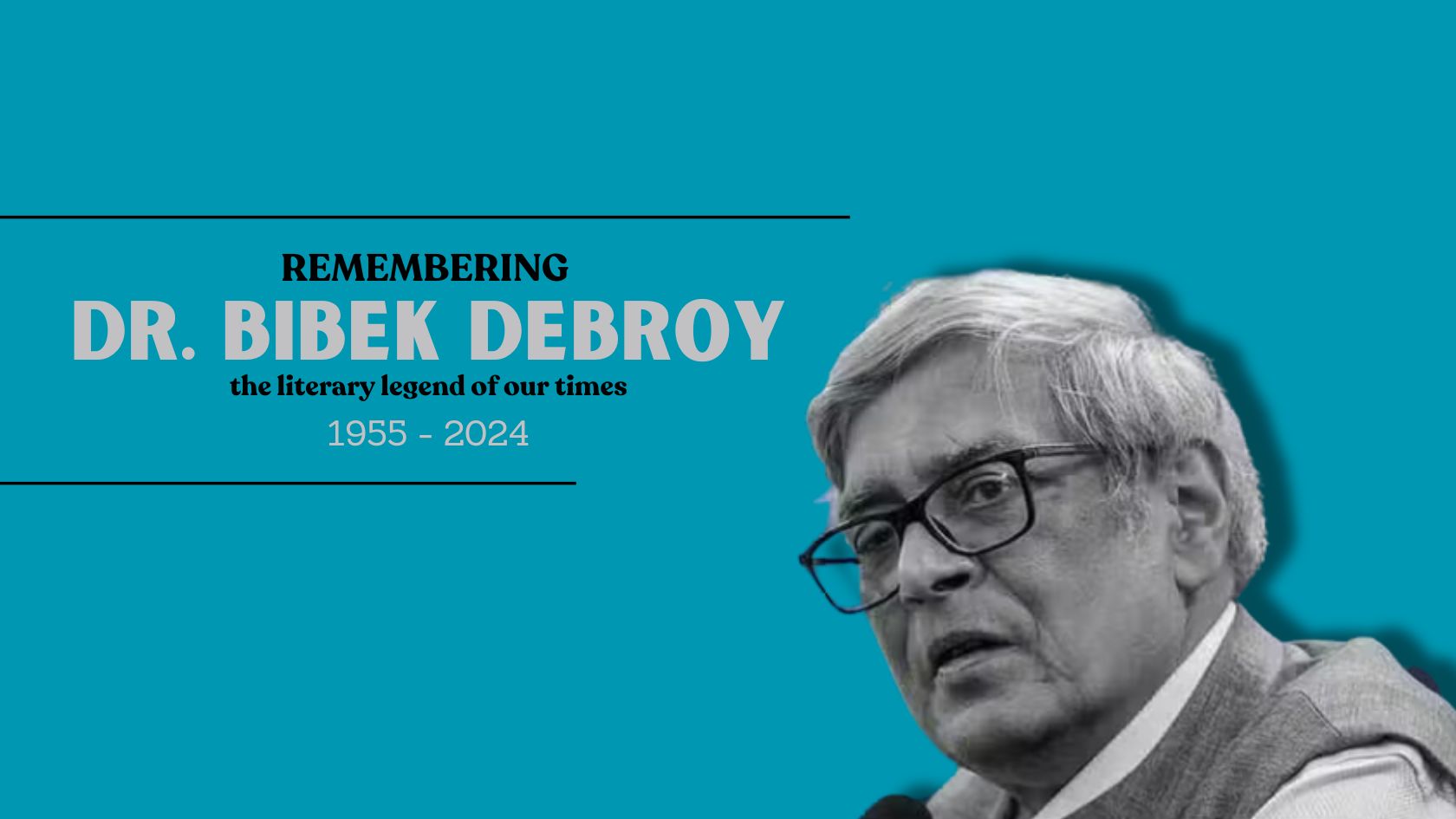
All authors who write about the Mahabharata have to read its unabridged version. The most popular unabridged translation used to be the one by Kisari...
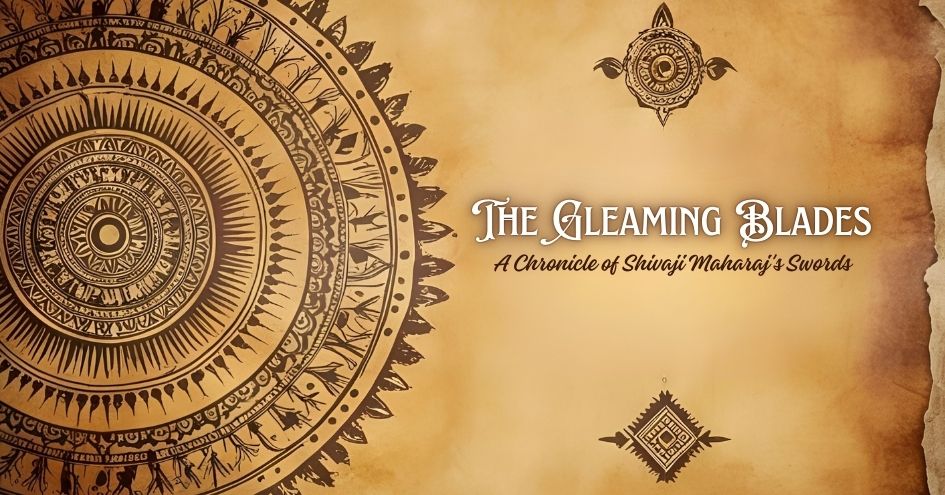
In the annals of Bharat Varsh, amidst the swirling mists of time and legacy, emerges the figure of Chhatrapati Shivaji Maharaj, a warrior whose name e...